“HOME
SWEET
HOME”
ANNOUNCING THE WINNERS
“Perhaps home is not a place but simply an irrevocable condition.” – James Baldwin
We’re delighted to present the results of our April 2021 competition judged by conceptual documentary photographer Marion Tandé – Manager of the Department of Photography at The Museum of Modern Art (MoMA), New York.
For this competition we were interested in ideas of the home as a place or feeling – households, home countries and cultures. Particularly poignant given the lockdowns that have kept many of us at home over the last 14 months, we nonetheless invited submissions of images old and new. Family life, domesticity, monotony and creativity, work and play – be it literal or metaphorical, from inside or out, we asked entrants to show us what home means to them.
The resulting selection of 20 – comprising street photography, portraiture, documentary and conceptual work, in locations from Morocco to Sydney, via São Paolo, Bangkok, London and many more – beautifully highlights our broad experiences of the home; a place of connection, restriction, wonder and despair. Exploring diverse themes of gender, mental health, LGBTQ relationships, family ties, protest and urbanism, they provide fascinating views into home as we see and experience it.
Congratulations to the selected photographers, and thank you to everyone who submitted. You can join the discussion on Facebook and Instagram.
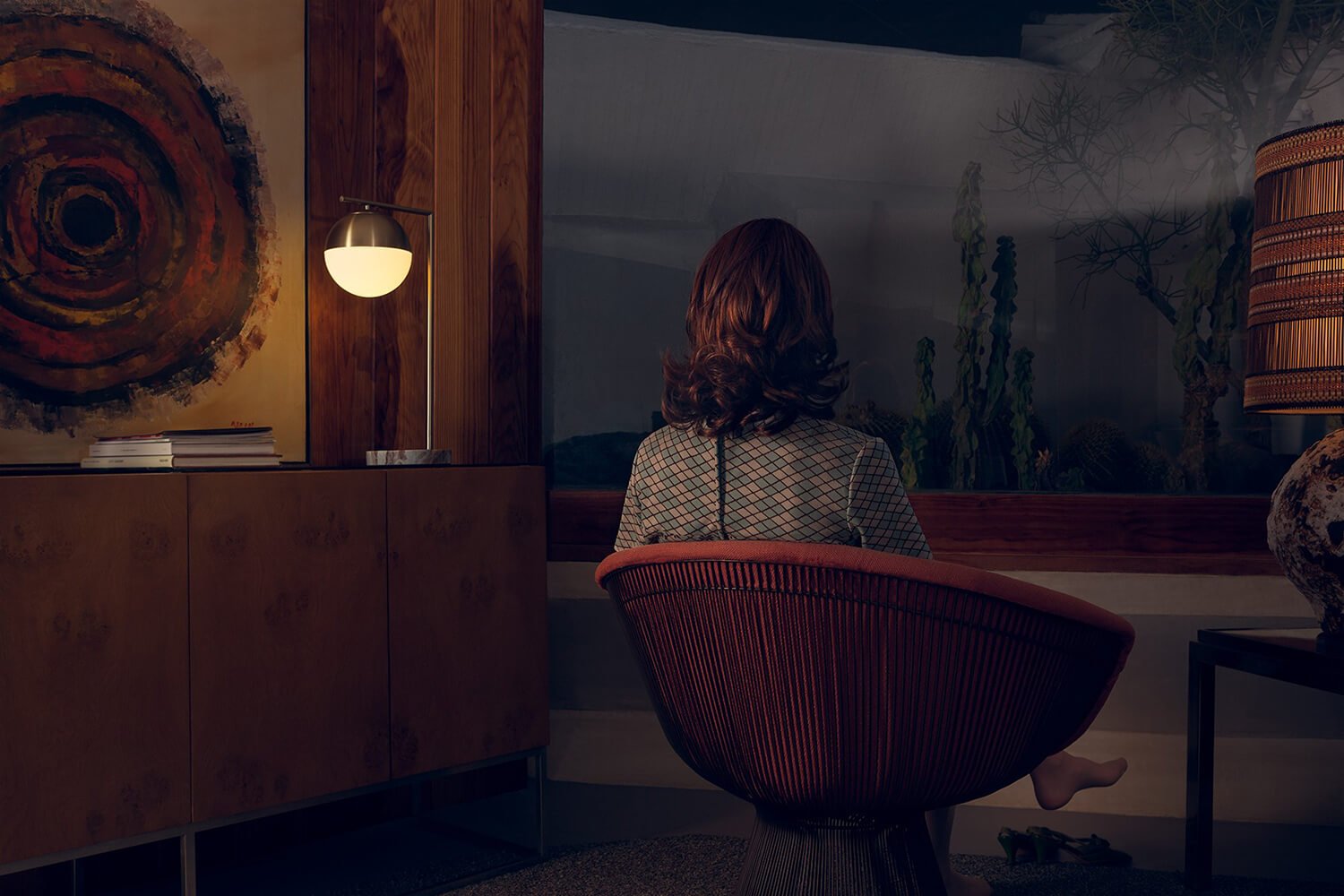
“Home can bring comfort and intimacy but also trigger an obligation for an image of perfection. Faceless in what seems to be a staged mid-century modern architectural setting, a woman has lost her identity, mimetically blending, if not nearly disappearing into the colors and patterns of her spotless living room. Only her bare feet indicate vulnerability. Many American women still evolve in the household sphere, defined by the 19th century “Cult of Domesticity” principles: piety, purity, submissiveness, and dissociability. I chose this image because it speaks enigmatically of the female condition in a sheltered, but ultimately stifling environment.” – Marion Tandé
Photographer statement – From the series Made in the Shade. “Through a mise-en-scene self-portraiture series, Made In The Shade depicts characters in Mid Century Modern settings, mirroring an era that was aspiring for change. Despite this societal urge to create a new modern lifestyle, women rapidly lost their independence gained during the war period and returned to domesticated environments to fulfill decades of gender role traditions.
The carefully staged scenes attempt to challenge female stereotypes. The series offers a powerful lens through which the viewer contemplates these women in a non-objectified way and reconfigures their essence. The absence of context gives these characters the power to be architects, scientists, musicians, engineers, doctors, etc.; roles often identified as being fulfilled by men. Through a female gaze, the work questions how society shapes human beliefs and ideologies, and overall, reinforces the importance to continue the action for gender equality in an era informed by #MeToo and #Time’s up movements.”
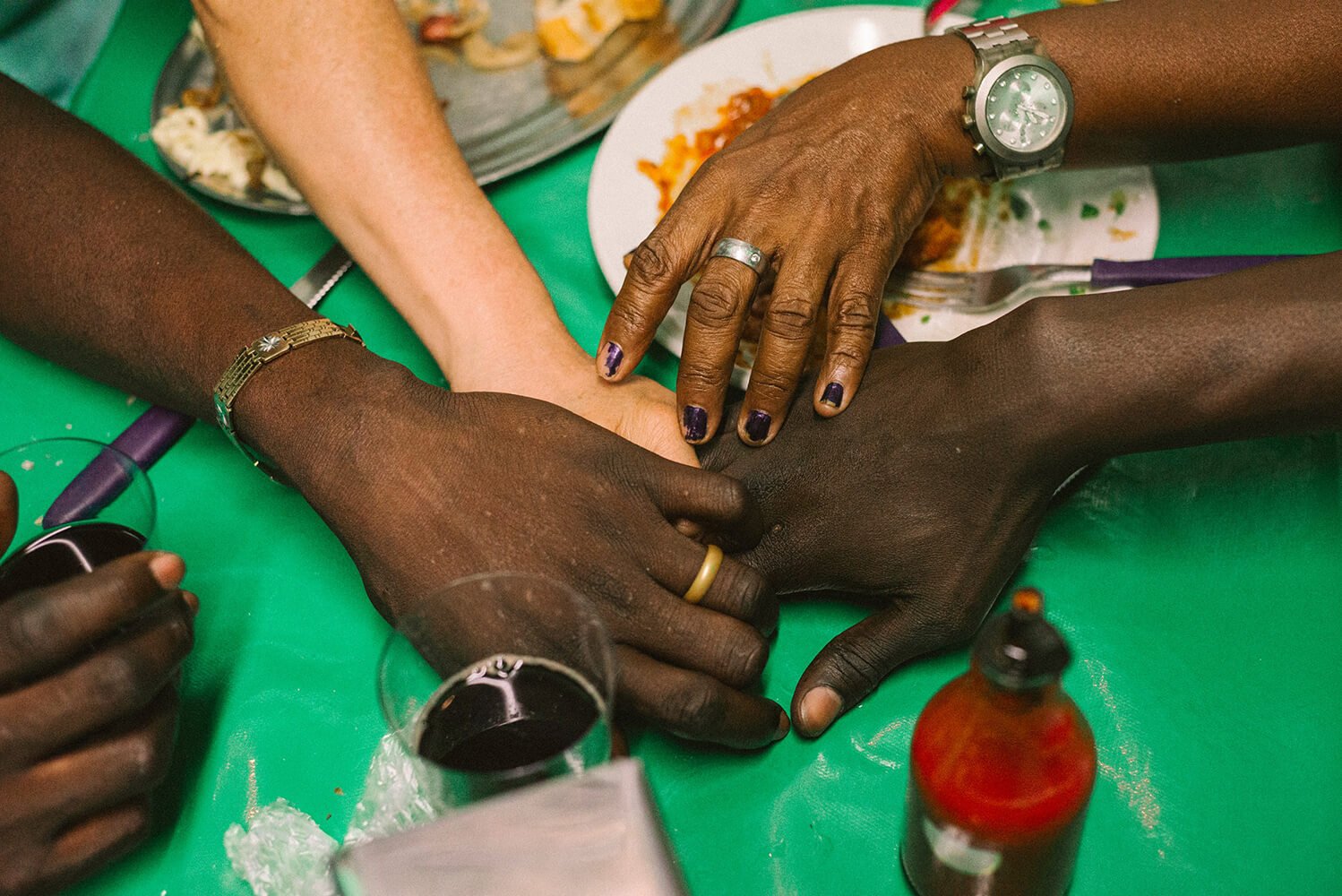
“This image was submitted without any information, which leaves the narrative entirely to the viewer. Like a book without text, I had to create a story for a visual. Is this an after-dinner game? A family portrait of interlacing hands? Four individuals of different generations, genders and ethnicities are gathered holding hands after a meal. We are reminded, as per the words of Dermot Bolger in The Journey Home, that “home was not the place where you were born but the place you created yourself, where you did not need to explain, where you finally became what you were.”” – Marion Tandé
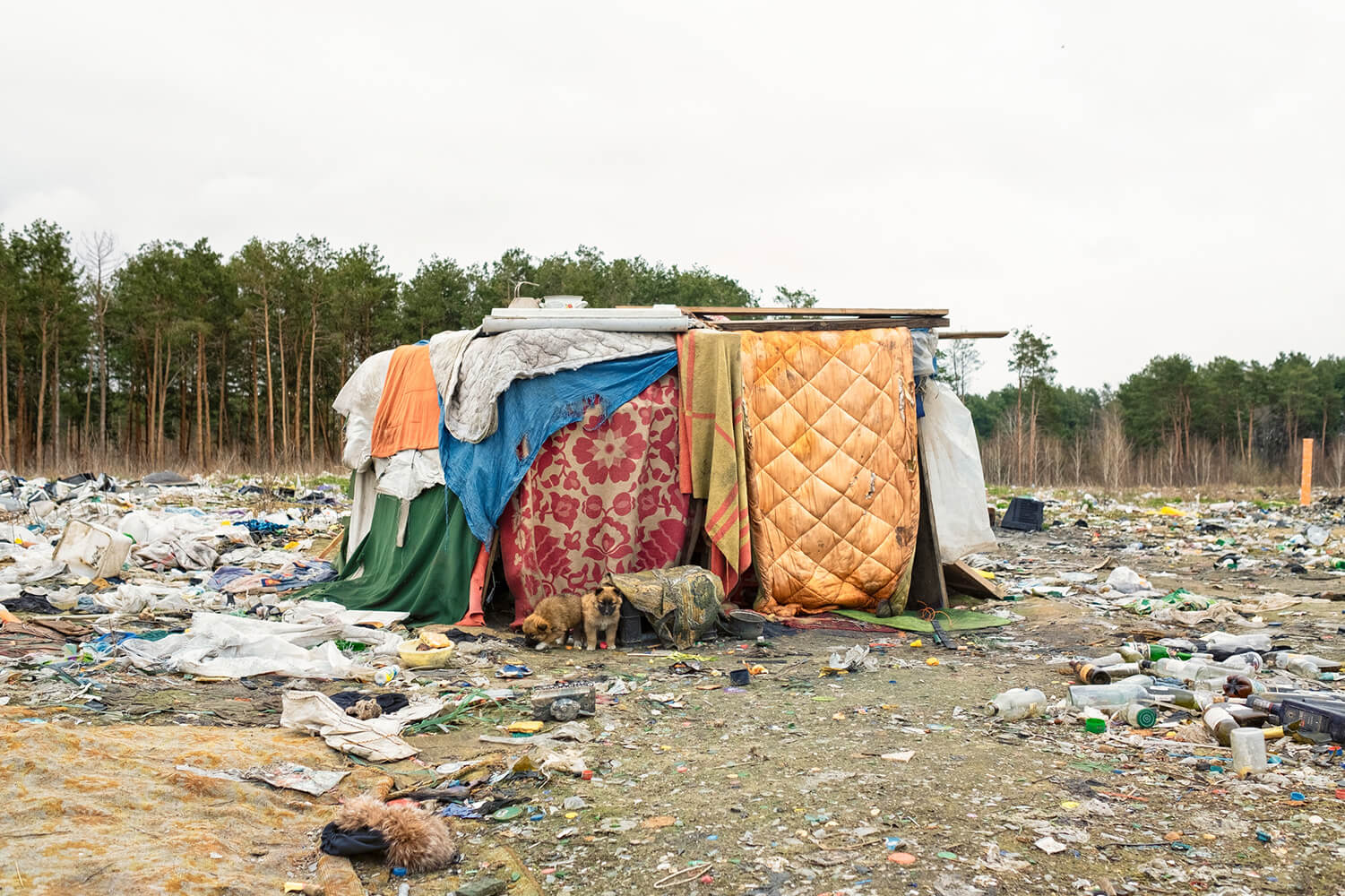
“Situated on a dump outside the city of Kyiv in Ukraine, this isn’t the most hospitable of locations to make one’s home, but it makes for a remarkable image – Lesya framing this colorful patchwork structure against the white detritus and pale sky, the puppies she describes in her statement almost camouflaged against it. Photographers should be wary of the so-called ‘poverty porn’ of scenarios like this – documenting poor people or conditions for the sake of entertaining a privileged audience – but the fact that Lesya avoids any people in the frame, and seems to have got to know the family that lives here from the nature of her statement, suggests she is wary of this. It’s a building that projects an unexpected beauty in a barren land, shamefully reminding the viewer of how we destroy the world with our waste, but that shame at the feet of others rather than those that call this place home.” – Life Framer
Photographer statement – “53 kilometers from Kyiv, people live surrounded by forest. They are adults and children, cheerful and sad, people with different fates, but one home – the dump. There are two trailers on the territory of the dump. Those trailers are shelters from rain, cold and wind. On the mountain of waste, grandfather Alexander built a house for himself from boards and blankets. He wants to be alone, but two puppies now break the silence. Eight adults and six children live in those trailers. When mother Julia leaves to collect bottles, little Deborah who is one and a half stays with the older children, playing in the garbage while they wait for their mother’s return. It’s a really great joy for children when their parents return with soft toys which they found. They don’t feel the sharp smell of the dump, they are not afraid of packs of wild dogs, they are not afraid of death, because they believe that in heaven it will be cozy, calm and there will be no garbage.”
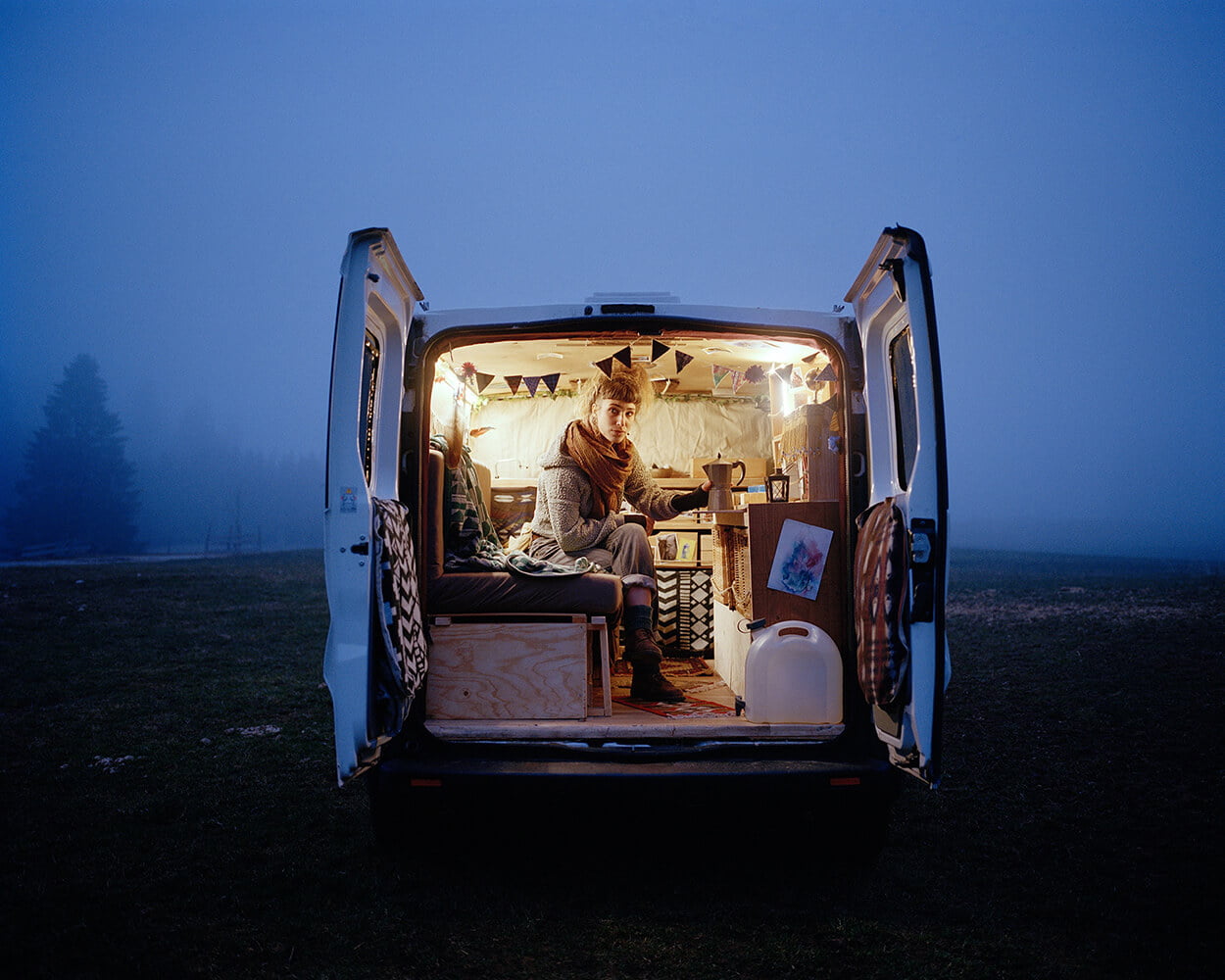
“Home on the road. This is a gorgeous, interesting view into a modest place packed with life and personality, set against a non-descript and misty backdrop. Here we see the home as both a place of adventure and refuge.” – Life Framer
Photographer statement – From the series Living Room. “In this project I offer a selection of living spaces. The portraits, made with analog film, faithfully bring back the atmosphere, the light. More so, it is as if the grain of silver has a chance to hold back the emotion of the moment. The process brings a calmer dimension, a meeting of material to material, it requires to take time. Through this approach, I show in a way the ability of each one to create their inner world.”
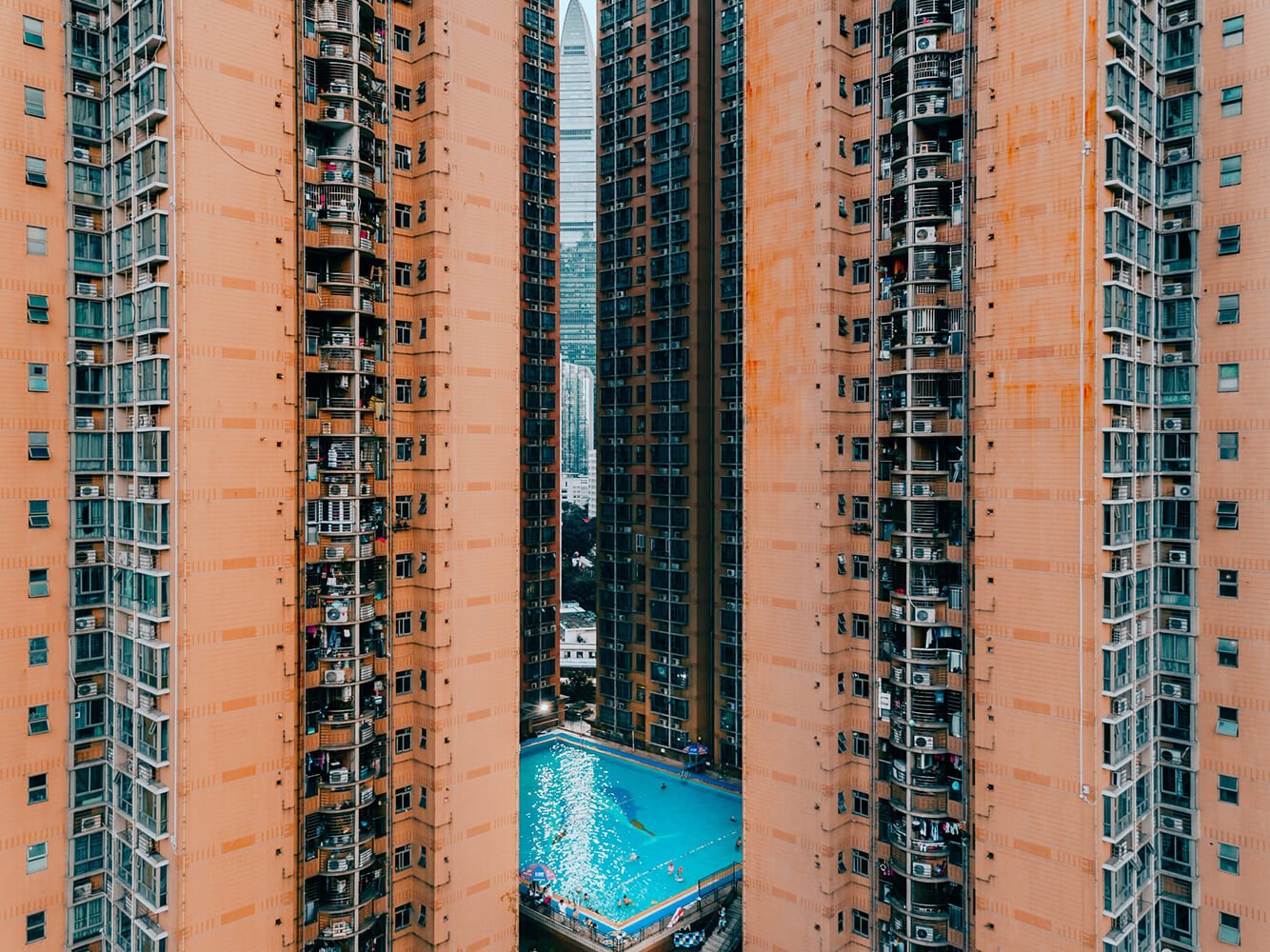
“Documenting urban living at dramatic scale, Vitaly’s scene of a swimming pool tucked between monolithic tower blocks in Shenzhen is quite breath-taking. Captured with careful attention to symmetry, what might feel overwhelming and oppressive in fact feels brimming with life – in part because of the vibrant orange and blue colors, and in part because of the tiny bodies enjoying the water, and all the objects that can be picked out on the many balconies. It’s a spectacular image of what so many of us call home – small, stacked boxes in the sky – and a reminder of the near-incomprehensible vastness of the urban world.” – Life Framer
Photographer statement – “A busy pool inside a residential compound, always busy on those summer days in Shenzhen.”
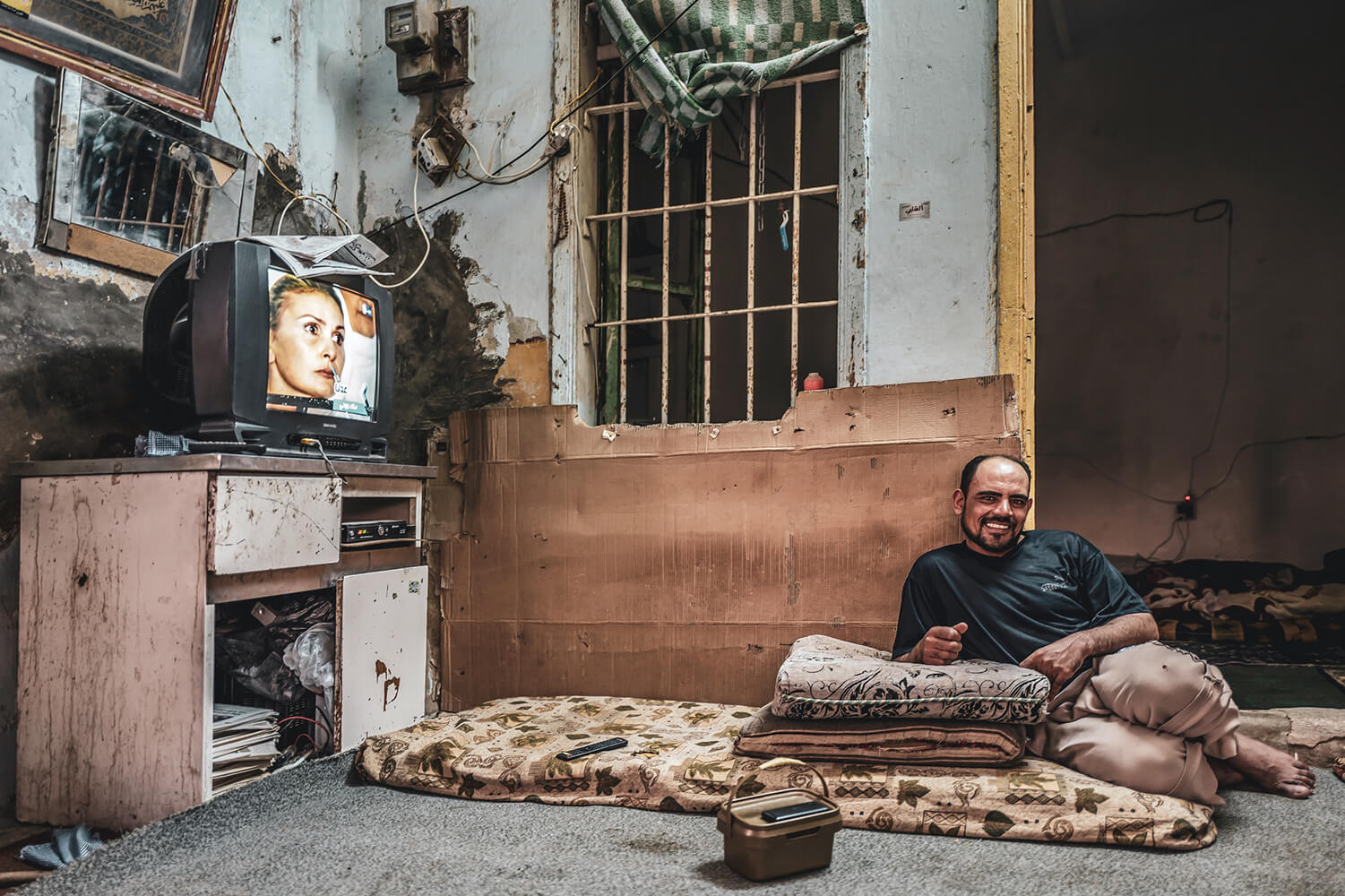
“The home is a personal space, and so it’s always a privilege for a photographer to be invited into it. Nicola doesn’t tell us anything about this image – who this man is or where we find him – and that’s a shame. But it’s nonetheless a striking scene. His subject’s smile is warm, and his home, while modest, is well-organized and dotted with touches of personality – a man who takes pride in what he has and the cards he’s been dealt.” – Life Framer
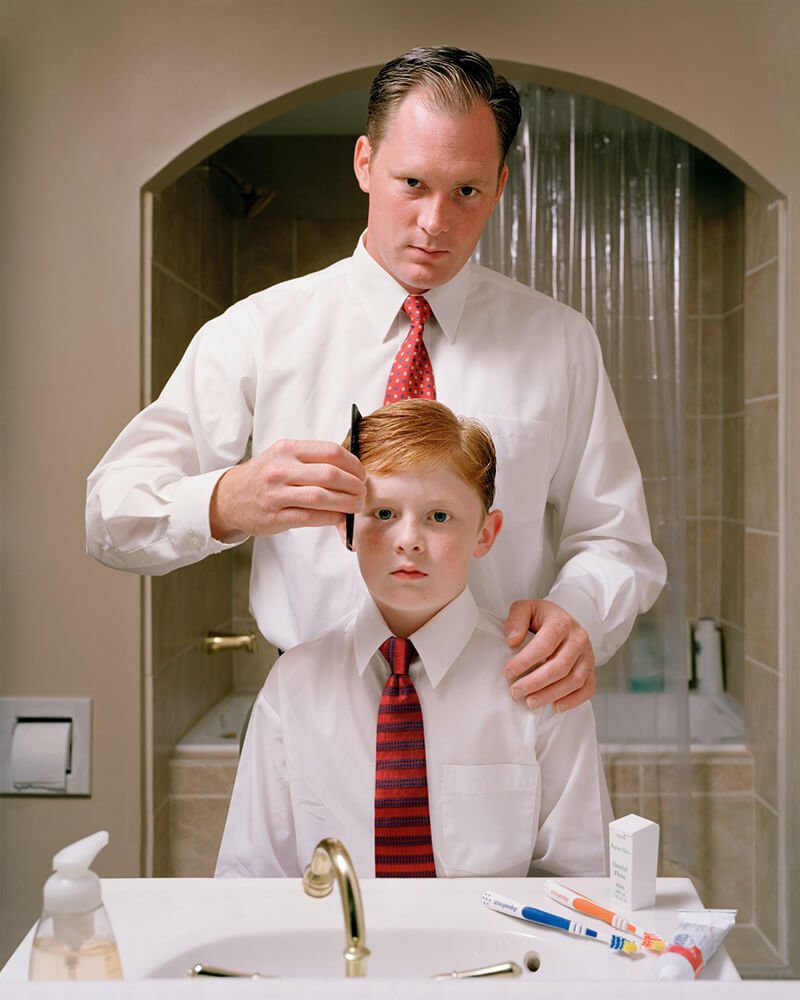
“Angela presents an evocative portrait that uses a quiet moment in a mundane home setting to explore ideas of fatherhood, responsibility and growing up. We see a moment of nurturing between father and son, but a sense of the former’s expectations too – of who his son should be and what he should become. It’s an image that says a lot with subtlety, and Angela’s execution is deceptively clever – impressively staged to make it look like we’re seeing a reflection in a mirror, witnesses to an otherwise intimate familial moment.” – Life Framer
Photographer statement – From the series Left Behind. “Untitled (Father and Son).”
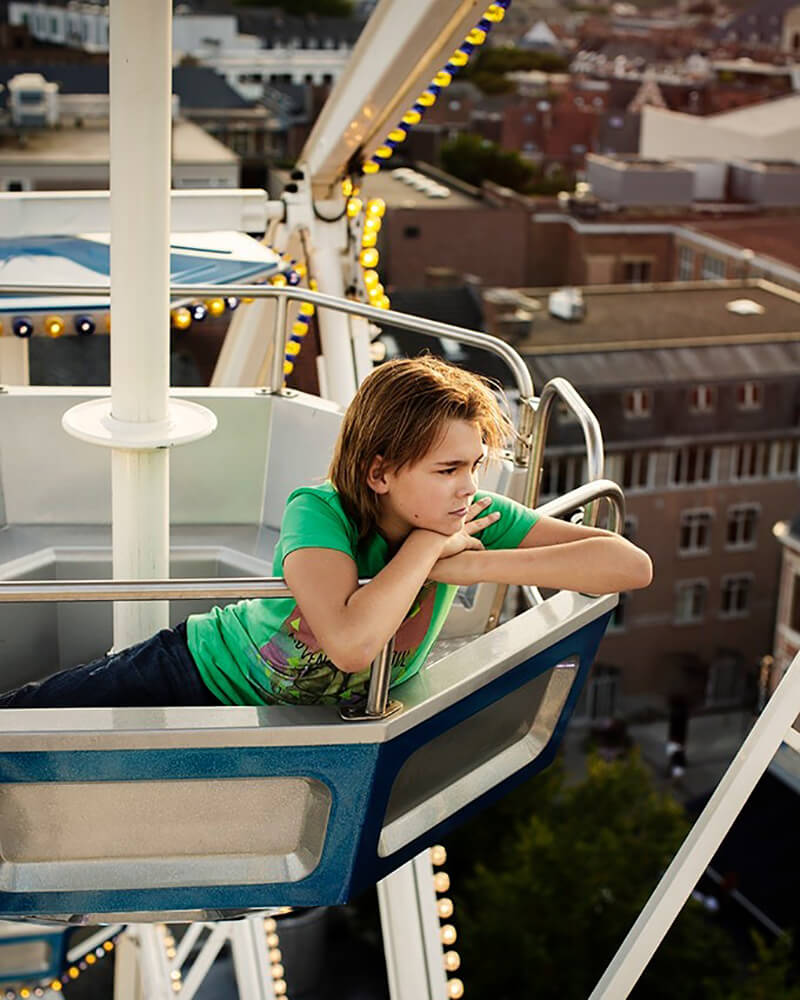
“While beautifully shot, an image of a fairground Ferris wheel may not immediately conjure ideas of home. But we learn from Tara’s statement that it’s from a project documenting a ‘fairground family’ who travel from location to location earning a living from this giant contraption. That knowledge gives this image a real emotional weight – this young girl looking across a town’s rows of houses, knowing that in a few days she’ll pack up and move on again. It’s wonderful image, capturing the melancholy that must come with a lack of belonging in any one place, despite the excitement and adventure of such a lifestyle one might imagine from an outsider’s perspective.” – Life Framer
Photographer statement – From the series The Ferris Wheel Kids. “Louis and Jan have always lived the carnival life. They travel from fairground to fairground with their Ferris wheel, living life in constant motion. This portrait series examines life between wheels, the family unit and the unshakeable bonds of brotherly love. In 2014 I started following Louis and Jan with my camera. I made a short film documentary about Louis’ last summer before he had to move to a boarding school in order to attend high school. The years after that I kept coming back curious to see if the strong family unit would change. Now Louis is back from high school and living with his parents again although this time he has his own mobile home, his own fun fair ride and a girlfriend. Despite always on the move I feel an enormously strong sense of home and family bonds with this fun fair traveling family.”
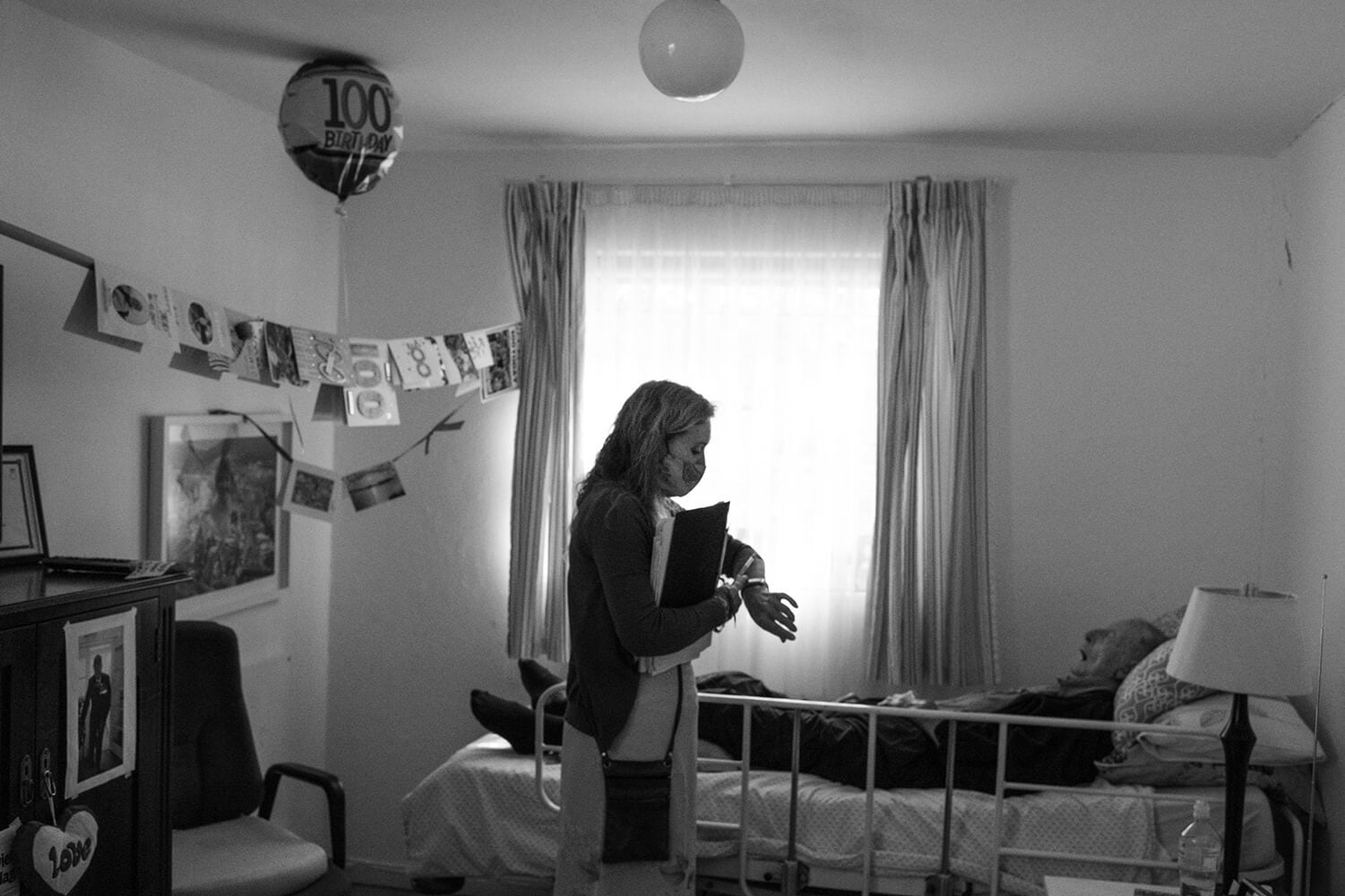
“With raw execution Margot presents an intensely powerful image, conjuring ideas of Earth as our home, and the finite time we all have on it. Reaching 100 years is something to be celebrated, but makes things no less poignant as a loved one edges towards the end. Using black and white film to heighten the emotion and intimacy of the scene, Margot captures the nurse as she checks her watch – a subtly significant moment that symbolizes the feelings of ephemerality this image evokes.” – Life Framer
Photographer statement – “Untitled (A hundred years).”
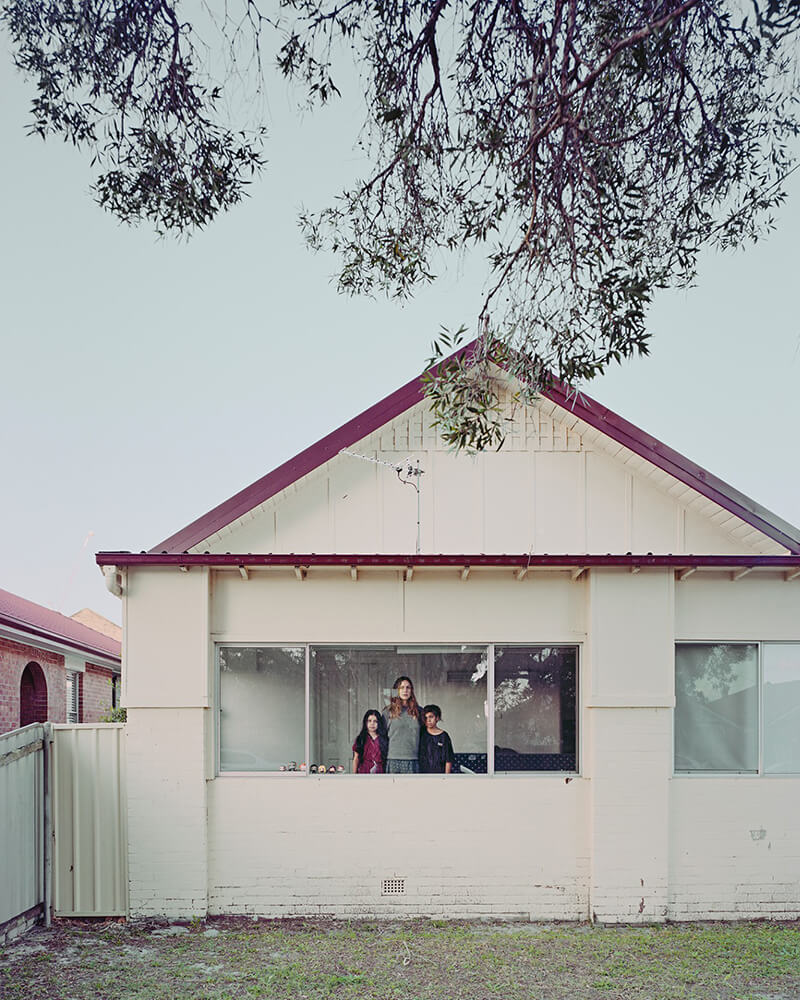
“As with Julia Fullerton-Batten’s image in this selection, the situation here is immediately apparent given the events of the last year or so, the home becoming a place of restriction as well as comfort. Shooting his subjects from a distance, Luke emphasizes the sense of isolation, but also their togetherness – their triangular arrangement of heights mimicking the pitched roof in a satisfying way, along with the inverted point of the tree branches from the top of frame. That interplay of shapes, along with the muted tones create a stark aesthetic beauty, emphasizing the sadness as if the world has been slightly drained of color. The context described in Luke’s statement – that this mother and her children are in a halfway house escaping domestic violence – is of course not directly apparent in the image, but such knowledge lends it an extra weight, and brings an additional interpretation to the subdued color palette Luke has carefully created.” – Life Framer
Photographer statement – From the series Portraits of Newcastle During COVID-19. “When the first Covid-19 public health order closures were announced in March 2020, the photographer wondered what this would mean for the world as well as the local community in Newcastle, Australia. He wanted to document how everyday people from different types of households and situations felt and what they experienced during an extraordinary year. The photographs explore togetherness during isolation recording the subject’s thoughts, fears and hopes for the future.
This image: Mel, Henry and Floss. RAAF veteran Mel (43), son, Henry (12) and daughter, Floss (10), isolate during the COVID-19 lockdown in a halfway house as they escape domestic violence. Suburb undisclosed, Australia. 4:47pm 4th May 2020.”
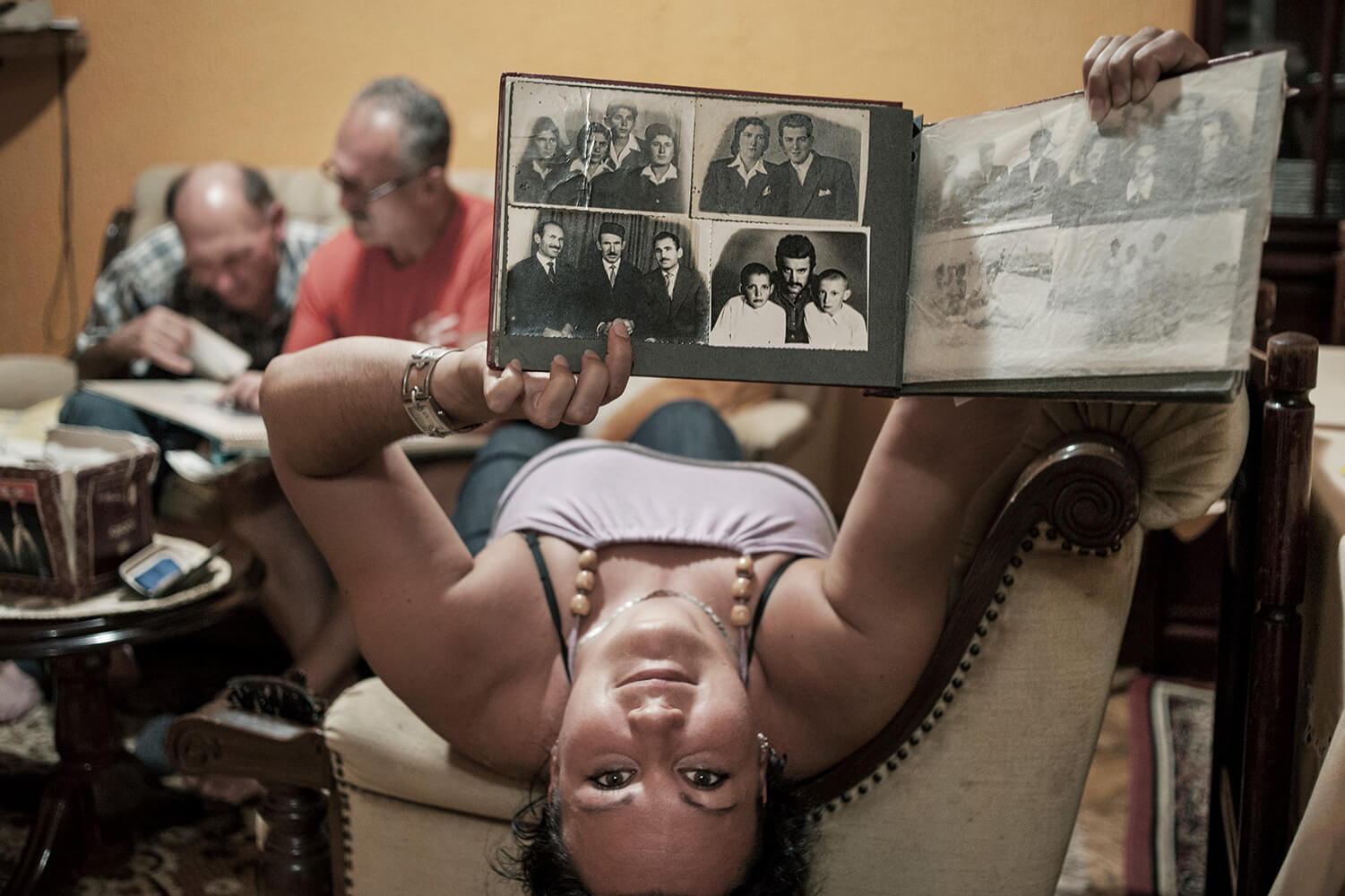
“Dejan presents a brilliantly composed image full of interest – from the main subject locked in intense eye contact with Dejan’s lens, proudly showing her family photos, to the men behind pouring over another album of images. It conveys so much in a single frame – the idea of home as family, of mortality, and of the power of photography in eliciting memory and connection. With photography now so ubiquitous, much of it in digital form and feeling somewhat disposable, it’s a reminder of the printed image as something to be cherished.” – Life Framer
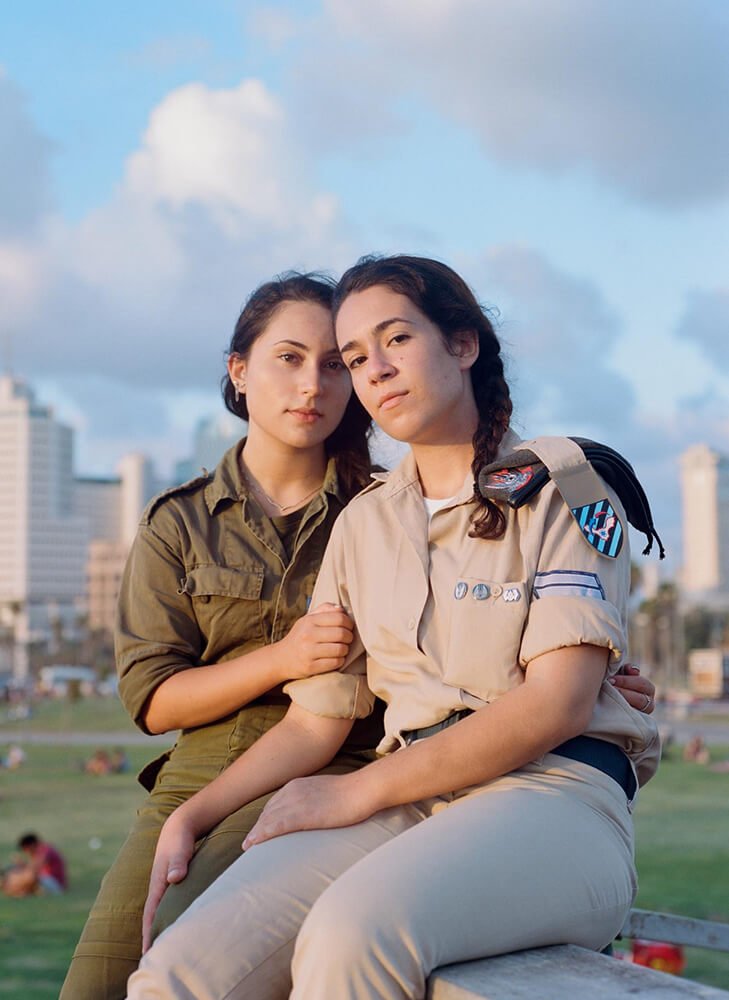
“Taken from a project in which Michael photographs LGBTQ couples from all over Israel – the country with perhaps the most developed LGBTQ rights in the Middle East – we see one such couple holding one another in a natural, tender embrace, and at ease with Michael’s lens. It has a warm, open quality at odds with their military uniforms, describing home as a place and as a feeling between lovers. That military service is mandatory for young Israelis gives an extra layer of meaning to the ideas of ‘home’ conveyed here.” – Life Framer
Photographer statement – From the series LGBTQ Love. “This project was born out of a desire to show what is equal Love. Love that is not related to others or to any institution but only to Love itself. In this project, I photographed LGBTQ couples from all over Israel. I wanted to carefully step into their life and to have the most authentic experience. I photographed each couple in their own home, which all of them opened so kindly, and shot everything on films to let the moment be, not more than 4-5 clicks. This archive shows Israeli gay love, and unfortunately unequal, love of 2020. I have 100 couples already.
This image: Amit Zachar & Reut Levi”
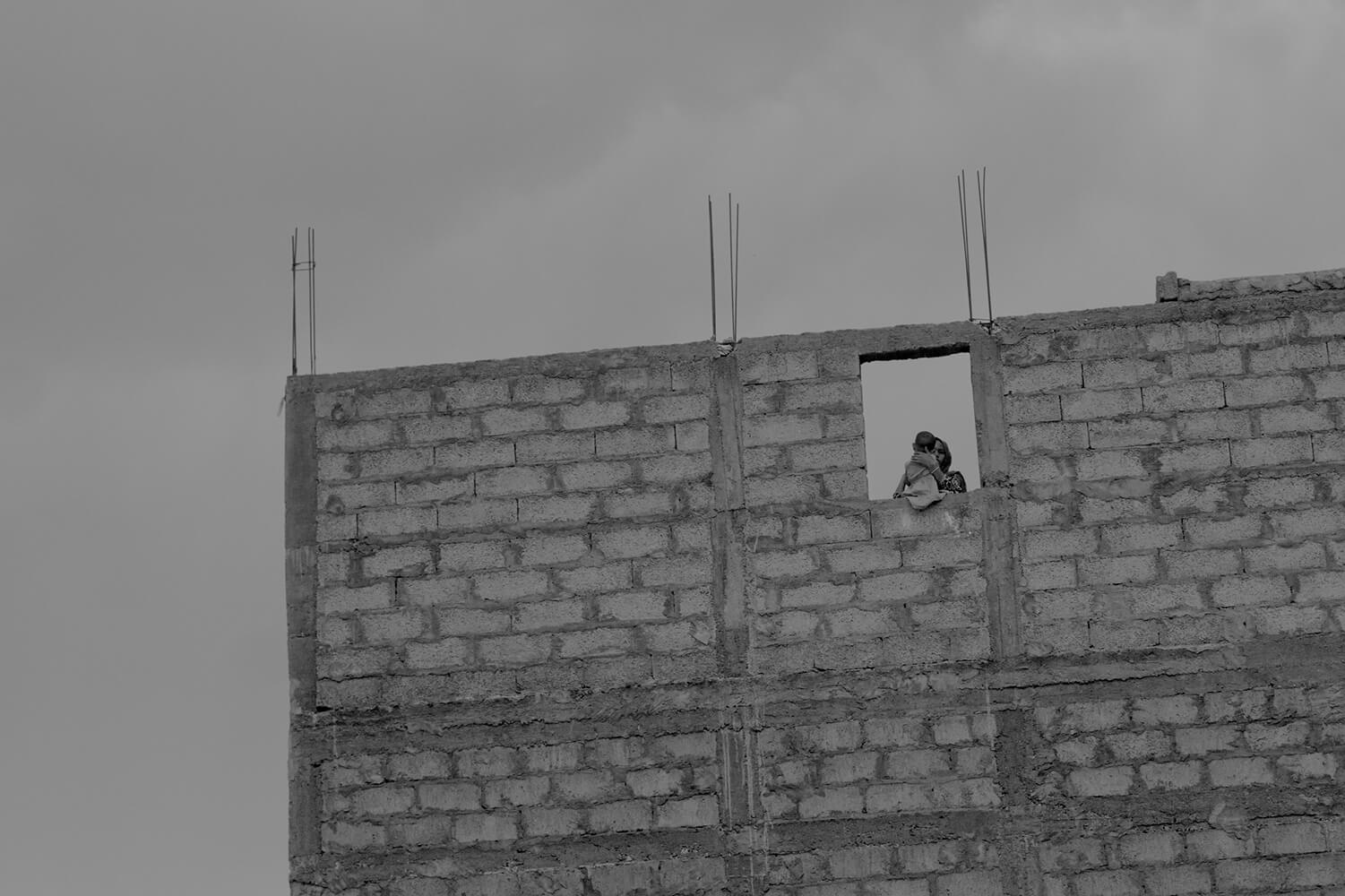
“Against a harsh breezeblock structure and unforgiving sky we see a small window of tenderness, mother embracing child as she looks out from her high vantage point. With great balance to the frame, it’s an image to remind us that we can only do the best with what we have, and that home is as much a sense of love and connection as it is a place.” – Life Framer
Photographer statement – “A mother and her child look out from a window in Morocco.”
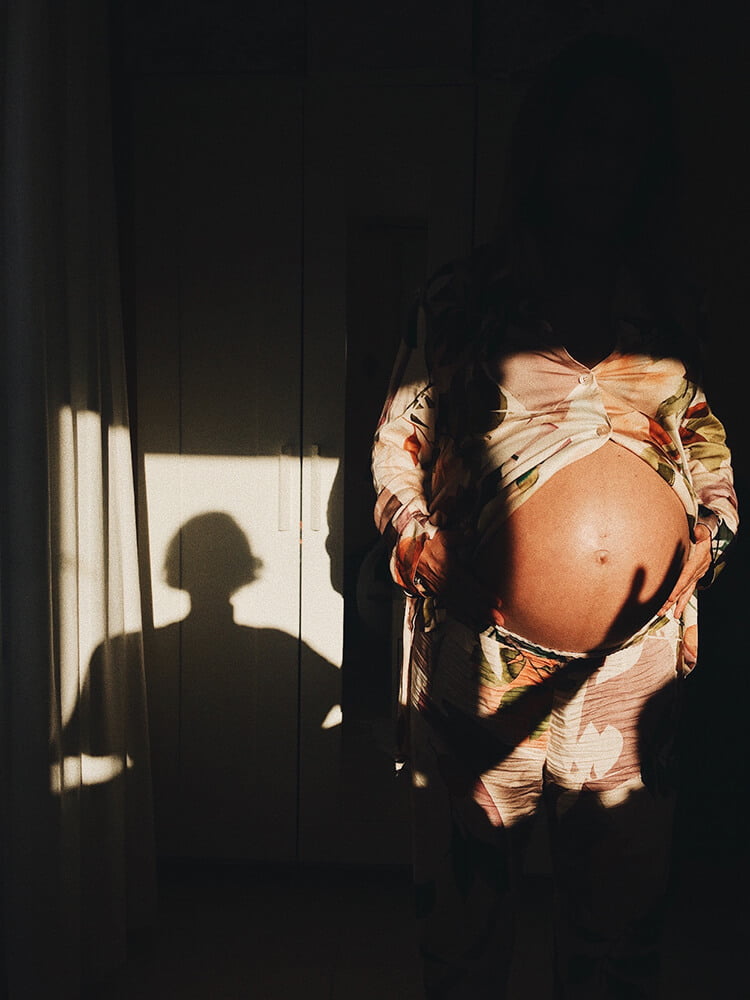
“This is a wonderfully creative interpretation of the theme – the body as a home in pregnancy. The shadow of the hand on the belly could have been a little sickly sweet were it not for the execution, Agustina using warm golden hour lighting and heavy shadow to create interest and ambiguity, boiling the scene down to its key elements and ideas. It’s a lovely moment, captured imaginatively.” – Life Framer
Photographer statement – “Portrait of me and my sister, 14 days before my nephew was born, Ibiza, 26 December 2019.”
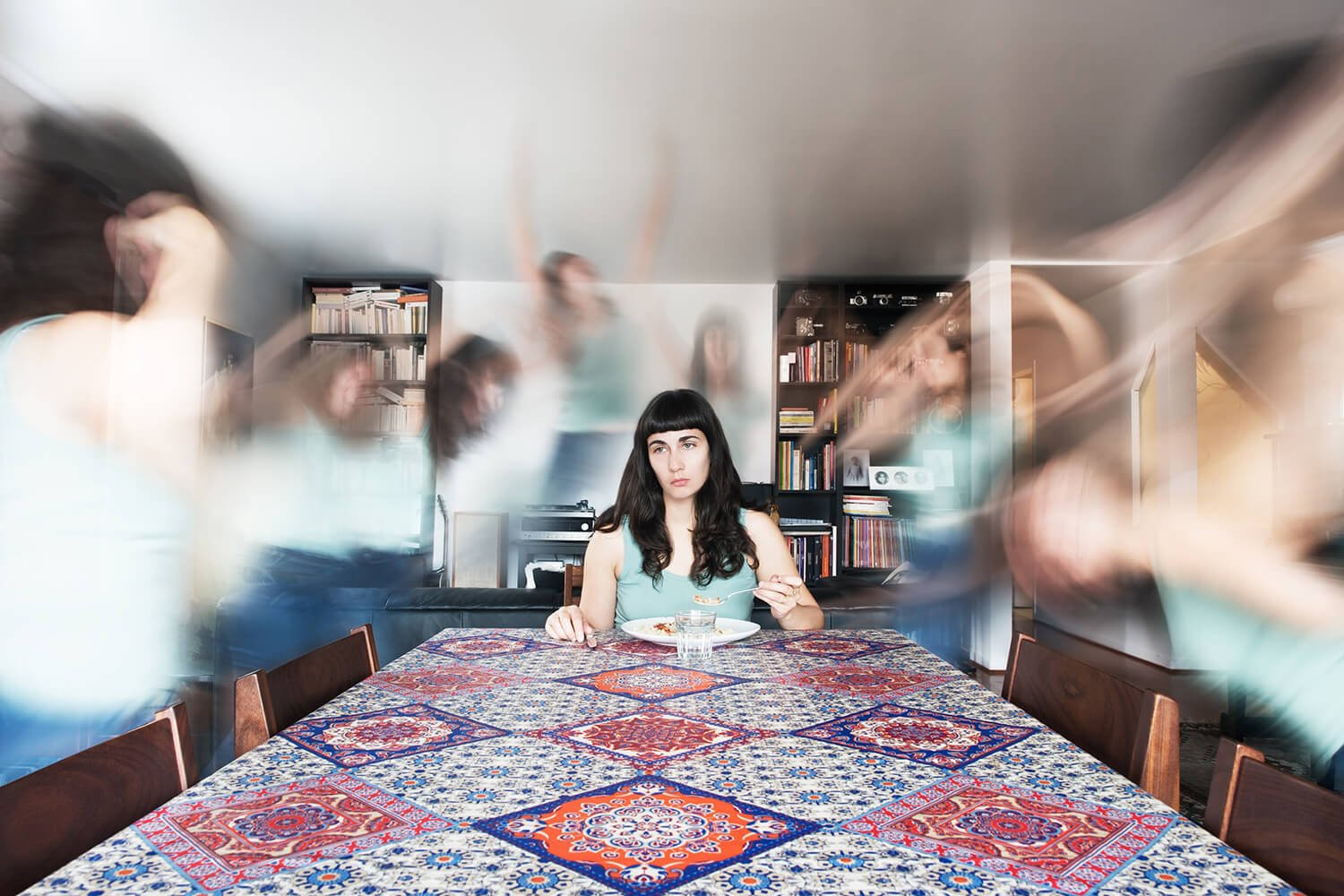
“Through sharp staging and careful execution, Anne Claire creates something quite powerful – a scene that evocatively captures ideas of isolation and stress, that tension between apathy and over-stimulation that has only been amplified by the pandemic. The muted color palette is highly effective in conveying the relatable emotion of being drained, and the slow-shutter blur in visualizing the demons we all battle with, to a lesser or greater extent.” – Life Framer
Photographer statement – From the series Ghost. “I made this series back in 2016. My goal was to illustrate loneliness as well as physical and psychological confinement produced by domestic life. The Covid-19 pandemic shed a new light on those pictures, creating a deep resonance with what we all had to face this last year.”
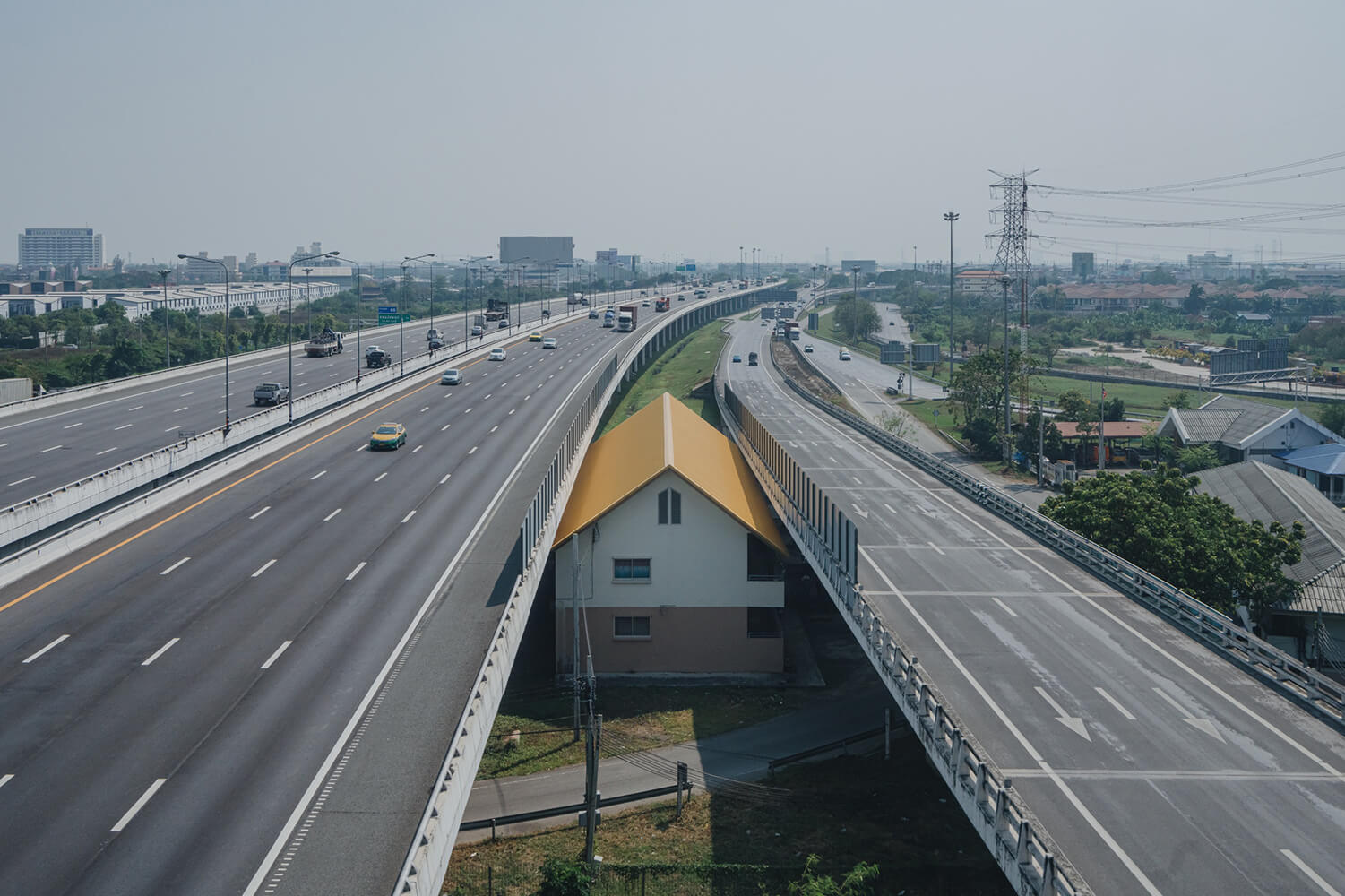
“What a remarkable scene! Occupying a sliver of space between two highway flyovers, this house stands its ground, making you wonder what came first. It feels almost unreal, especially with the simple Lego-like construction and bright yellow roof of the house offering the only burst of real color against the muted greys of suburbia. It’s a little pocket of personality, intriguing us with who might occupy such an idiosyncratic home as the world rushes by above.” – Life Framer
Photographer statement – “A house wedged in between highways on the outskirt of Bangkok, Thailand.”
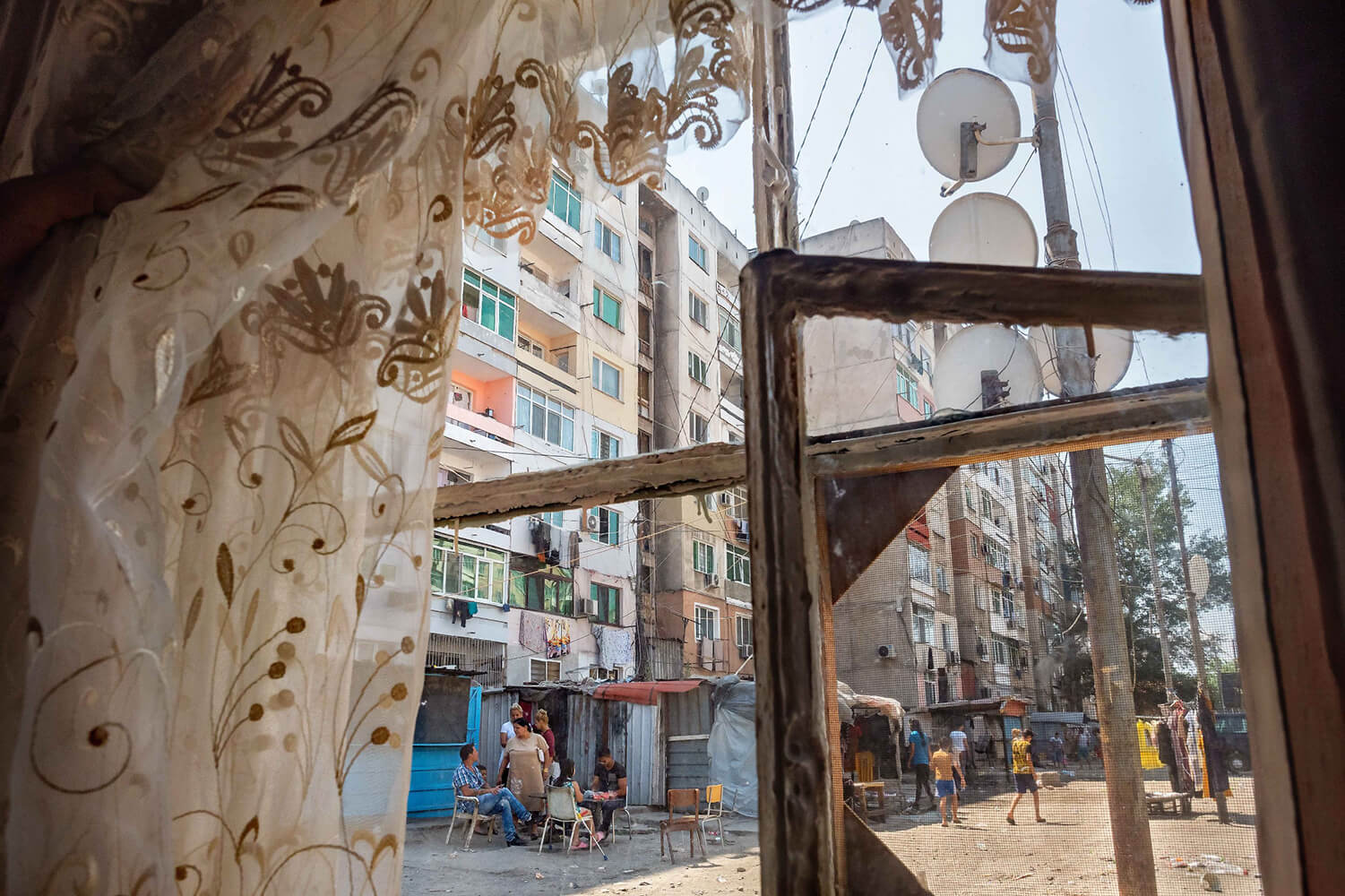
“Taken from a project documenting Europe’s largest Gypsy ghetto in Bulgaria, home to a community heavily discriminated against as Selene describes in her statement, this image nonetheless doesn’t feel political or moralistic – Selene instead capturing life there for what it is: busy, messy and beautiful as in so many other parts of the world. Shot through a window, there’s a voyeuristic quality to the scene, the viewer glimpsing life as it passes by. This window is a fabulous framing device, inclosing colorful apartments in one panel, a community meeting in another, satellite dishes in another… a fascinating and naturalistic ‘behind the curtain’ document of daily life.” – Life Framer
Photographer statement – From the series ZOR – Europe’s Biggest Gypsy Ghetto. “Formerly an ordinary district of the city during communism, Stolipinovo was turned into a ghetto with the event of democracy and the privatisation of industries which caused gypsies to lose their jobs because of racial discrimination. The current population of Stolipinovo, considered an outcast by the Bulgarians, is assumed to be around 80,000 people.
The inhabitants have Turkish cultural and linguistic roots and identify themselves as Turks. Although the most common religion is Islam, the community of Stolipinovo has a diverse religious panorama, including paganism, while different religious identities coexist within the community. The social structure is based on family, strongly defined gender roles, and a system of internal hierarchies, which rely on community gained respect and wealth. Cultural traditions are a core part of the system of values: life events are celebrated openly, mostly on the streets, and shared within the whole community. Historically discriminated and stereotyped as in contrast with Bulgarian culture, the inhabitants of the gypsy ghetto of Stolipinovo live in squalid decay and daily social, housing, and health emergency.
Surrounded by hostility and within an atmosphere of generalised awakening of nationalist sentiments, Stolipinovo is a portrait of systematic discrimination in Europe in our century.
This image: July 2020, Stolipinovo, Plovdiv, Bulgaria. Street view on the gypsy ghetto from the window of a shack. Since the last two decades, the structure of the Stolipinovo ghetto develops around decadent formerly communist blocks, with improvised houses and shacks around them. Most inhabitants face daily social and housing emergency. Strongly based on the sense of community, daily life mostly happens on the streets.”
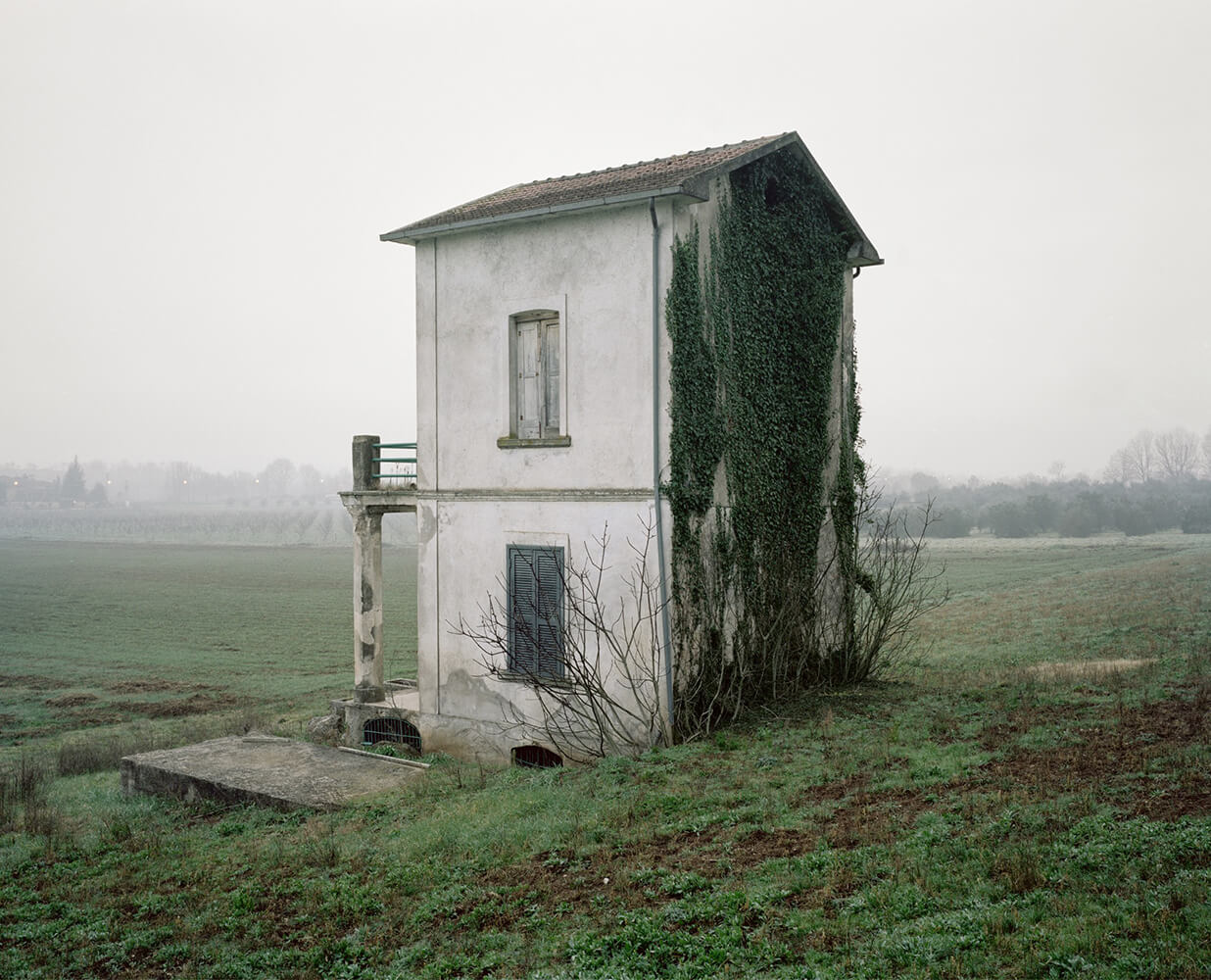
“Shot with meticulous technique, Vincenzo describes this desolate house as ‘magnetic’ architecture, and there’s certainly something captivating about it. Battered by weather, and starting to be reclaimed by the plant life around it, it stands nonetheless as a place of refuge from the inclement weather, eliciting questions of its purpose and history. Who calls, or called it home? Captured in pale, delicate tones, there is a beautiful dialogue between the natural and the manmade, and an alluring, meditative quality, as Vincenzo describes in his text.” – Life Framer
Photographer statement – From the series Mónos. “A solitary house of the southern Italian inland stands out against the natural environment as a monolith. It is a singular and magnetic architecture, photographed in the wintertime under particular light condition; but not only: it is also a place of dreams and meditations, which invite us to reflect on the symbolic meaning of the house for human beings.
This image: Mónos n.14”
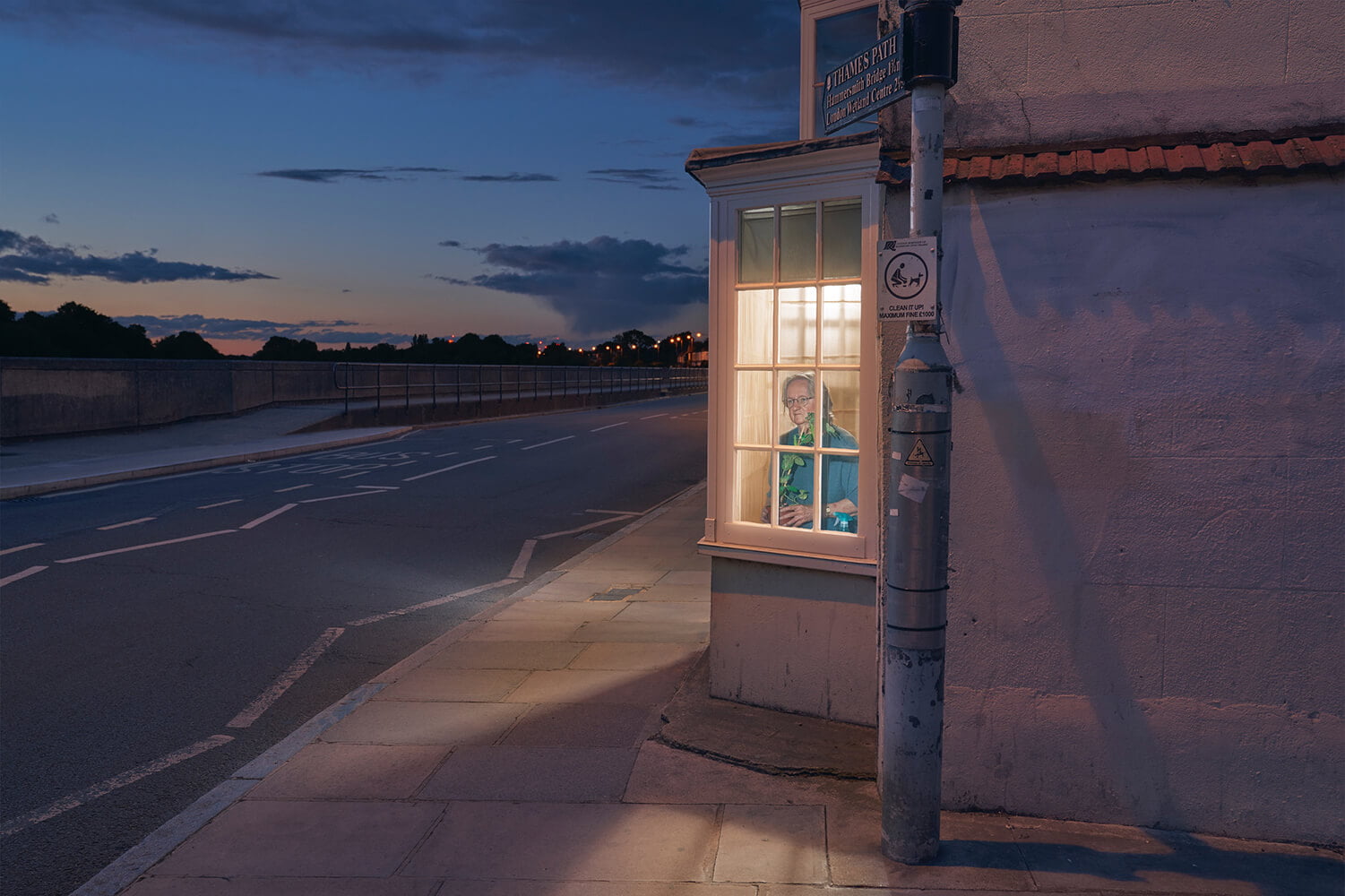
“In this beautifully crafted scene, we see a lady looking out onto an uncharacteristically empty London street, the circumstances obvious given the events of the last year. Shot with cinematic precision, and with the twilight emphasizing a certain eerie feeling, we gaze into the subject’s window, her melancholic expression and the way in which she cradles her houseplant so expressive of the isolation she must feel. It’s a lovely detail, providing a glimpse of character despite the deliberate sense of detachment to the scene.” – Life Framer
Photographer statement – From the series Looking out from Within. “We have probably been less seriously affected by the virus than many other people: we are retired, live on our own in a fairly spacious house with a garden, and we have access to good local shops and pleasant riverside walks. Moreover, we are retired academics so we can continue with various aspects of our working lives even under quarantine: we can read, write, and take part, online and by email, in research projects and publishing projects.
We have learned that most of our neighbours (including some we had not met before) are sensible and willing to be helpful. The Thursday clapping ritual has been as important for fostering community spirit as for appreciating essential workers.
We miss friends and social contacts of course, and travel, both national and international. We miss theatres, cinemas, restaurants and pubs. While acknowledging that we are in a better position than many, we are naturally anxious about the outcome, both for ourselves (we are over 70) and for others. We want to be able to look back on this very strange time but no-one knows when it will end.
This image: Ann, Lockdown 1, Day 74.”
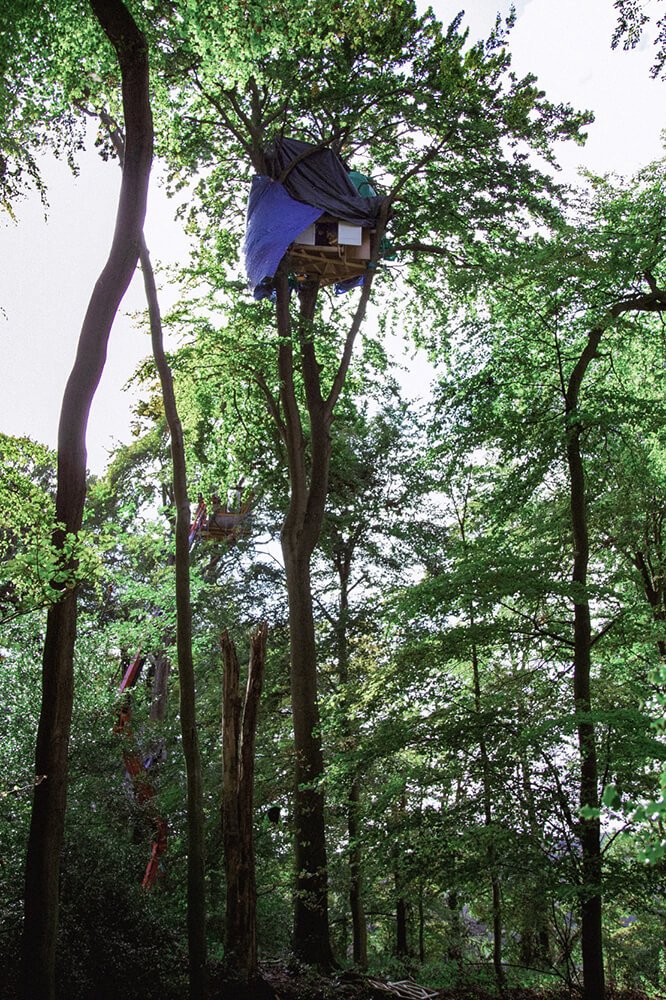
“While not the most aesthetically beautiful image – perhaps better shot from an angle to avoid the backlighting of the sun – this is nonetheless a compelling response to the theme. Documenting campaigners protesting the destruction of ancient forest to make way for a railway line, it highlights home, not just from the perspective of this precarious-looking treehouse on high, but also the myriad species that occupy this woodland. The crane winding its way upwards in the background of the frame is a fascinating detail – is it being used to construct these protestors’ make-shift dwellings, or in the effort to remove them? It’s a powerful document of passionate efforts to preserve nature in the face of urban expansion.” – Life Framer
Photographer statement – “For me these images are the meaning of home sweet home. They have also completely transformed my understanding of the phrase. At the beginning of 2020, before the pandemic confined us all to our homes, I joined a campaign resisting a highly destructive and controversial high-speed railway being constructed in the UK. In doing so I left my London house share to move into one of over 100 ancient woodlands threatened by the project. From this moment, my home became a squatted woodland community, partly on the ground and partly suspended in the branches of the trees we are protecting. Over the past year I have lived on over 10 encampments within the 135-mile route that the train line will run. I have helped build and inhabited a dozen treehouse homes, explored what it means to live within the environment one is protecting and within a vibrant, transient community. All the while documenting my experience through images like these.”